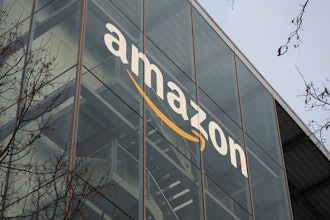The manufacturing industry is between a rock and a hard place. The industry has experienced tremendous growth, adding close to 350,000 new jobs in 2017, as reported by CNBC. However, increased growth doesn’t mean its troubles are over. A joint study conducted by Deloitte and the Manufacturing Institute found that there is a widening gap between jobs needing to be filled and a skilled talent pool capable of filling such positions. This gap is expected to increase as the same study found that an estimated 2.4 million roles will be left unfilled between 2018 and 2028.
As the skills gap continues to plague the manufacturing industry, overcoming these recruiting challenges has become top of mind to fill roles and meet demand. So, what can manufacturers do to solve this problem?
The Answer Lies in Tech
Today’s workforce wants to be involved in something cutting edge and innovative — think the latest startup out of Silicon Valley or tech giants like Facebook, Google or Amazon. However, few realize that the manufacturing industry is actually adopting some of the most innovative technologies on the market. In fact, research firm IDC has forecasted spending on Internet of Things (IoT) devices, led predominantly by manufacturers, to reach $745B in 2019. Discrete manufacturing and process manufacturing have been investing the most with $197B in spending primarily focused on supporting manufacturing operations and production asset management.
This investment has allowed for significant adoption of innovative technologies that are changing the way manufacturers operate and the day-to-day labor of workers on the factory floor. Gone are the days of dangerous work environments or mundane assembly lines.
Some of the most innovative technologies being adopted in manufacturing include:
- Internet of Things (IoT) sensors: Productivity and efficiency are major limiters in manufacturing. Adopting IoT sensors on the factory floor allows for smart machines that can identify inefficiencies or potential product defects before they can be identified by workers. This will allow for increased productivity and improved business intelligence, leading to greater innovation within the organization.
- Augmented Reality (AR): Lack of guidance and frequently asked questions can limit productivity and frustrate workers.With the help of AR glasses or headsets, workers can use interactive overlays that provide step-by-step directions or troubleshoot without having to wait on counsel from supervisors or take risks that may lead to mistakes.
- Exosuits - One of the more innovative solutions to hit manufacturing, wearables are solving one of the biggest issues in the industry: chronic pain and injury. With the help of exosuits, workers can enjoy a longer, more comfortable, career by avoiding the side-effects of repeated physical motions caused by heavy lifting or assembly.
The Real Benefits
While significant changes are being made to the industry as we know it, manufacturers are doing little to promote the innovative measures they’re taking. As a result, misconceptions of the industry remain, leading to talent overlooking the industry as a potential employment option.
To help attract more talent, manufacturers should not only promote the innovative technologies being adopted, but also the benefits that they provide for employees. Beyond being cutting-edge, many of these technologies also address significant misconceptions related to safety, lack of upward mobility and slow, boring work. For example, exosuits are improving workplace safety, AR headsets resolve troubleshooting frustrations and accelerate training and data from IoT sensors are increasing productivity.
When evaluating potential job options, experience is often a top factor in a candidate’s decision process. As a result, it’s important when promoting the workplace benefits brought on by new technologies that the hiring team has the right messaging to communicate these perks to candidates. Consider having a checklist or script for HR and hiring managers to refer to when speaking to candidates. In addition, if safety allows, have candidates see these benefits first-hand when coming in for an interview. Take them on a tour of the manufacturing floor or point out new technologies being used by staff.
Transition Into Hiring
Not only does the adoption of new technologies change the workplace environment, but they also allow manufacturers to rethink their talent pool. Instead of solely having to rely on candidate skills, hiring teams can focus on more valuable attributes like whether a candidate is a quick thinker, independent or is a clear leader. The skills can be taught to a candidate that holds these qualities and many of these technologies can assist including training in AR, efficiencies being addressed through IoT-enabled data, or safer training with exosuits.
By prioritizing behavioral tendencies over skills, manufacturers can do more than just identify and hire talent faster. They can also begin to address another challenge of the industry: company culture. Adjusting roles for existing employees and hiring talent to fill in specific gaps is critical when improving company culture. For instance, someone who is eager to learn can often bring enthusiasm to the team, while a clear leader can add greater camaraderie. Improved company culture is necessary to solving recruitment challenges as its strength has a direct correlation on employee satisfaction and retention.
By focusing on the technologies being put in place, and the peripheral benefits they provide, manufacturers can prioritize hiring candidates with softer, harder to teach, skills. By taking this approach they will fill more jobs by making the work more attractive to candidates while also creating a more efficient, happy workforce.
Greg Barnett is the Senior Vice President of Science at The Predictive Index.






















